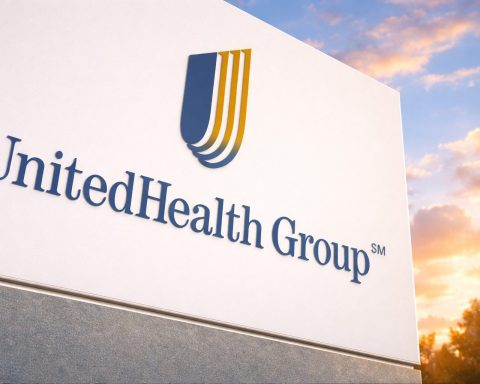Merck & Co., Inc. (NYSE: MRK) extended this week’s rally on Wednesday as investors digested fresh late‑stage results for its investigational oral PCSK9 inhibitor and an FDA clearance that supports broader precision use of Keytruda-based therapy. Below is what changed today and how it fits into Merck’s 2025 storyline.
Today’s highlights at a glance
- Shares climb as Wall Street continues to price in Merck’s cardiovascular push following Phase 3 data for its oral PCSK9 drug, enlicitide decanoate (MK‑0616), presented over the weekend at AHA 2025 and published in JAMA. [1]
- Companion diagnostic win (Nov. 11): FDA cleared Promega’s OncoMate MSI Dx as a companion diagnostic to guide use of Keytruda + Lenvima in advanced endometrial carcinoma—timely support for one of Merck’s most important oncology regimens. [2]
Market move: why MRK is in focus today
Merck shares traded higher on Wednesday after back‑to‑back catalysts in cardiometabolic and oncology. The stock’s strength follows AHA 2025 presentations showing that enlicitide—a once‑daily oral PCSK9 inhibitor—cut LDL‑C by 55.8% at 24 weeks vs. placebo in broad hypercholesterolemia (CORALreef Lipids), with a 59.7% reduction in a post‑hoc reanalysis and sustained benefits through 52 weeks; in a separate study of HeFH, the 24‑week LDL‑C reduction was 59.4%. Safety was comparable to placebo, and adherence reached ~97% in both trials. [3]
Peer‑reviewed detail arrived alongside the presentations: JAMA published the HeFH findings, reinforcing the magnitude and durability of LDL‑C lowering. [4]
What’s new on the Keytruda front
FDA clearance (Nov. 11): Promega said the agency approved OncoMate MSI Dx as a companion diagnostic to help identify microsatellite‑stable (MSS) endometrial carcinoma patients for treatment with Keytruda (pembrolizumab) plus Lenvima (lenvatinib)—a regimen Merck co‑markets with Eisai. The test is intended to support selection of appropriate patients in a setting where MSS disease historically responds differently from MSI‑H tumors. [5]
This diagnostic nod arrives amid ongoing label, formulation and lifecycle moves around Keytruda (including the new subcutaneous version approved earlier this fall), underscoring Merck’s strategy to defend and extend the franchise. [6]
Strategic and financial backdrop investors should remember
- Cardiovascular pipeline momentum: Beyond the weekend’s results, independent trade and industry analyses suggest an oral PCSK9 could have practical advantages (daily pill, clinic throughput) against injectables—one reason the Street is leaning bullish on the data. [7]
- Deal financing for next‑gen oncology: Last week Merck secured $700 million in funding from Blackstone Life Sciences to accelerate development of sac‑TMT, a Kelun‑partnered ADC targeting TROP2 across multiple tumor types—an important post‑Keytruda pillar. [8]
- Manufacturing scale‑up in the U.S.: Merck has now lifted U.S. investment above $70 billion, including a $3 billion Virginia facility to expand capacity for biologics and small molecules. [9]
- Q3 scorecard and guidance: On Oct. 30, Merck reported $17.3B in Q3 sales (up 4% YoY) with Keytruda at $8.1B (+10%), and raised full‑year non‑GAAP EPS guidance to $8.93–$8.98 on $64.5–$65.0B in revenue; the quarter also reflected the October close of the Verona Pharma acquisition (COPD therapy Ohtuvayre). [10]
What to watch next
- Regulatory path for enlicitide: Merck says it intends to share Phase 3 results from CORALreef Lipids/HeFH/AddOn with regulators worldwide; a filing would mark the first oral PCSK9 entrant if approved. [11]
- Further diagnostic ecosystem build‑out: With OncoMate MSI Dx now cleared, look for any real‑world uptake data and payer coverage updates that could influence Keytruda+Lenvima utilization in endometrial cancer. [12]
- Capital deployment and U.S. build‑out: Updates on the Virginia project timeline and capacity adds for biologics (including Keytruda) will be read as signals for 2026–2028 supply planning. [13]
The bottom line
For Nov. 12, 2025, MRK’s move is being driven by durable Phase 3 oral PCSK9 data that could open a significant new market in cholesterol management—paired with a new FDA‑cleared companion diagnostic that strengthens precision use of Keytruda + Lenvima in endometrial cancer. Together with fresh financing for ADC programs and ongoing U.S. manufacturing expansion, the day’s news reinforces Merck’s push to diversify beyond Keytruda while defending its core oncology business. [14]
This article is for informational purposes only and does not constitute investment advice.
Sources: Merck press releases and clinical disclosures; JAMA publication and AHA communications; Reuters coverage on financing and manufacturing expansion; FDA‑related announcements. [15]
References
1. www.merck.com, 2. www.promega.com, 3. www.merck.com, 4. jamanetwork.com, 5. www.promega.com, 6. www.reuters.com, 7. www.biopharmadive.com, 8. www.reuters.com, 9. www.reuters.com, 10. www.merck.com, 11. www.merck.com, 12. www.promega.com, 13. www.reuters.com, 14. www.merck.com, 15. www.merck.com










